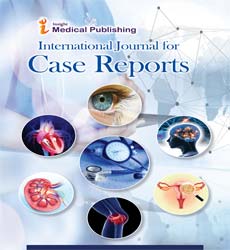Editorial on Lung Cancer Surgery
Gulay Gok*
1Department of Cardiology, Medipol University, Istanbul, Turkey
- *Corresponding Author:
- Gulay Gok Department of Cardiology, Medipol University, Istanbul, Turkey E-mail: glygk84@gmail.com
Received Date: August 1, 2021; Accepted Date: August 14, 2021; Published Date: August 21, 2021
Citation: Gok G (2021) Lung Cancer Surgery. Int J Case Rep Vol.5 No.5:e053
Currently lung cancer surgery is evaluated based on perioperative morbidity and mortality. Long-term survival, on the other hand, reflects the surgery's oncologic efficacy. Deleting the posterior port, reducing the total number of ports, and ensuring proper distance between the robotic arms, the anterolateral technique in robotic lung cancer surgery was developed for more efficient port placement. When this method is utilised, four ports are created in the patient's anterolateral area, allowing the robot to dock from the side. The assisting surgeon's involvement can be reduced by using this port placement, and solo surgery with the robotic process is achievable. After lung cancer surgery, problems have a negative effect on time. We investigated whether the effects of postoperative complications on survival differ significantly across the spectrum of postoperative complications. Lung cancer remains the leading cause of cancer death, with earlystage non-small cell lung cancer patients having the best chance of survival. While there is growing optimism that annual computed tomography screening will improve outcomes, the impact of co-existing airflow limitation on survival is unknown. Patients who have their lungs resected are at risk of suffering acute renal damage afterward. The measurement of cytokine levels allows for the early detection of an inflammatory response. Surgical excision of artery tumours is a difficult technique. Thoracic aortic end grafts have recently been shown to help with in bloc excision of malignancies invading the aortic wall. The best treatment option is to divide the procedures before lung resection to limit the chance of bleeding and thus avoid negative outcomes for the patient. Lung cancer is more usually detected in its early, operable stages. Video-assisted thoracoscopic surgery is used to treat localised non–small-cell lung cancer. A propensity score-matching analysis was used to assess the predictive value of the albumin-to-alkaline phosphatase ratio in patients having VATS lobectomy for nonsmall- cell lung cancer. The link between pulmonary mycobacteriosis and lung cancer has been studied for many years, but the recent information is mixed, with some research finding a link and others reporting no link. Although pulse pressure variation is a useful dynamic metric for predicting the rise in cardiac output following fluid administration in abdominal surgery, its application in thoracic surgery is debatable. A study was conducted to determine how PPV behaved following lung resection surgery. In instances like reduced tidal volume and open chest surgery, parameters based on the interplay between the heart and lungs have been called into doubt. The study's purpose was to investigate the effects of one-lung ventilation on stroke volume fluctuation, as well as the impact of airway pressures and lung compliance on stroke volume variation. Because of the risk of invasion into coronary grafts, particularly the left internal mammary artery, treating primary lung cancer of the left upper lobe in patients who have had a prior coronary artery bypass graft is challenging to plan and execute.
Open Access Journals
- Aquaculture & Veterinary Science
- Chemistry & Chemical Sciences
- Clinical Sciences
- Engineering
- General Science
- Genetics & Molecular Biology
- Health Care & Nursing
- Immunology & Microbiology
- Materials Science
- Mathematics & Physics
- Medical Sciences
- Neurology & Psychiatry
- Oncology & Cancer Science
- Pharmaceutical Sciences
